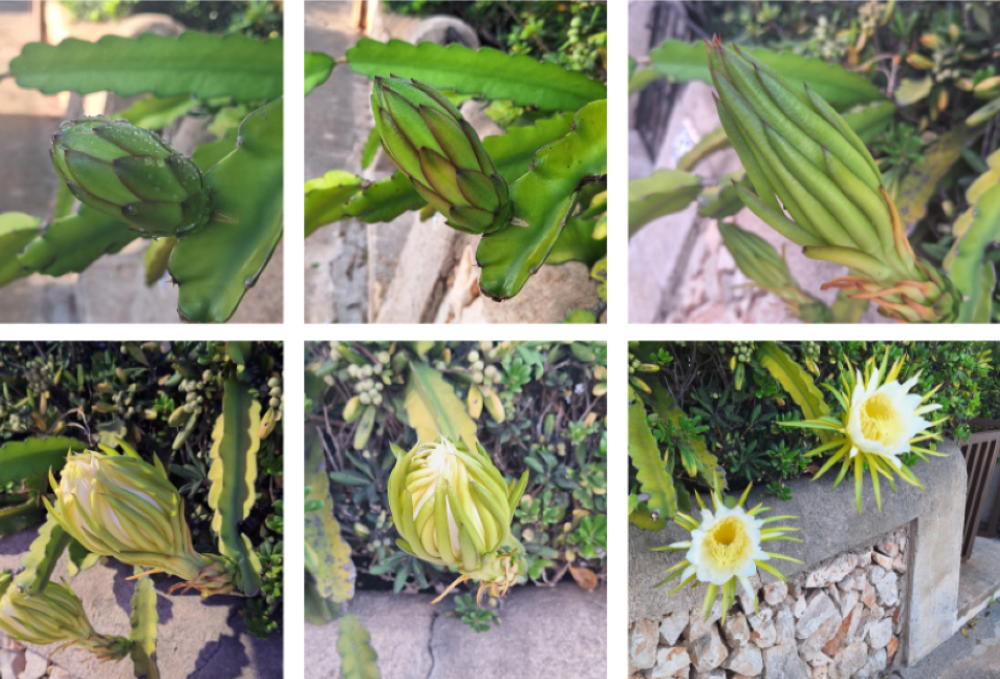
Sr. Magda Bennasar's photographs capture the process of a plant's growth, from bud to flower. (Magda Bennasar)
This month's question brings us to the end of our journey with the inspiring group of panelists for the seventh season of The Life. While public discussion often highlights declining numbers in religious life, there are equally powerful signs of renewal and growth emerging in communities today.
This month, we asked our panelists to reflect on their experiences or observations of new spiritual life within religious life: Where have you seen signs of new spiritual life and rejuvenation within religious communities and what forms is it taking? How are these new expressions being nurtured?

Julian Cleary is a member of the Benedictine community of St. Placid Priory in Lacey, Washington. She is a licensed attorney, having worked for many years with adults and children with disabilities before entering the monastery. She has occasionally advocated for detained refugees and hopes to be more involved with this ministry in the future. Her current ministries include work as a spiritual director, participating in the monastery's health care team (she is a former nurse practitioner), liturgy committee, grant-writing and other projects.
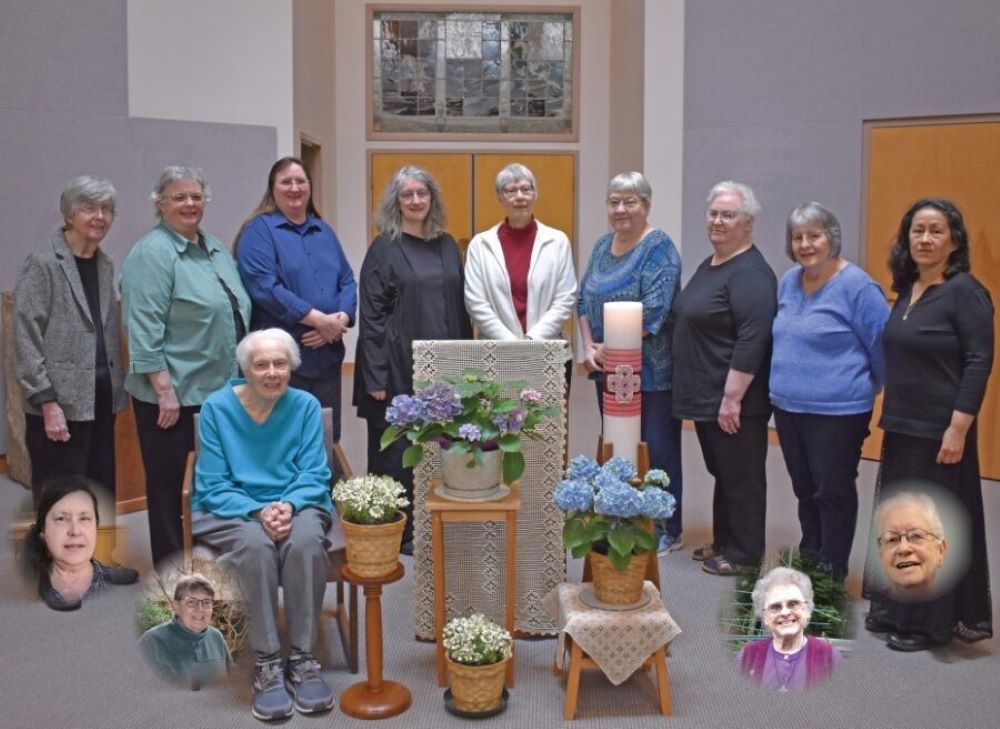
The community of the Benedictine Sisters of St. Placid Priory, in Lacy, Washington, is pictured in this 2024 photo. Sr. Julian Cleary is in the top row, second from left. (Courtesy of St. Placid Priory)
Although people raise concerns over declining vocations, a 2020 study by the Center for Applied Research in the Apostolate, or CARA, on recent vocations to religious life, shows a hopeful trend. Significant numbers of women are still responding to the call to religious life and remain hopeful about its future.
CARA's findings show that newer members are attracted to their religious institutes not only for its ministries, but for its spirituality, charism, prayer life, mission,and community life. For many, living simply and authentically is essential — a real sign of rejuvenation.
Signs of new spiritual life in the U.S. include the vocations of women who are more ethnically and racially diverse than those in perpetual vows, often from various cultural backgrounds. The United States is increasingly becoming a missionary site, with many vocations now originating from Africa and Asia. With this shift, we see signs of new spiritual life that may expand the old ways or replace them entirely with new types of spirituality.
Assisting in the care of our elder sisters can also be a profound sign of spiritual renewal. These icons of faith have much to teach us, while newer entrants bring new life. The wisdom of older sisters and the enthusiasm of newer members can indeed be sources of rejuvenation.
The renewal of religious life might come from re-embracing some of the long-standing devotions that communities may have set aside for private practice. The CARA study shows that new members cherish devotions such as the rosary, eucharistic adoration and the Stations of the Cross. Incorporating these devotions into our communal life and prayer practices might respond to calls for authenticity, transparency and simplicity.
Hope in religious life abounds.
The CARA study also showed that new vocations desired a connectiveness with others in formation, whether in the same congregation or with those from diverse religious communities, even world-wide. Benedictines have created a program called Wisdom Connections where those in Benedictine formation across the United States connect monthly via Zoom to share experiences and support one another. Those connections nurture and sustain emerging spiritual lives.
Hope in religious life abounds. The new diversity brings rejuvenation, as both established and contemporary forms of community prayer and life sustain our newer sisters. Embracing technological connections has also proven essential, bridging distances and fostering a renewed sense of community.
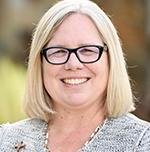
Linda Buck is a Sister of St. Joseph of Orange, California. Her ministry is informed by transformative leadership, psychology, theology and transformational social change. She uses her academic and experiential background to promote culture change within current and emergent systems, including religious life. She is the executive director for the Leadership Collaborative. Prior to this, she was director of initial formation/novice director for her congregation, a psychotherapist and spiritual director.
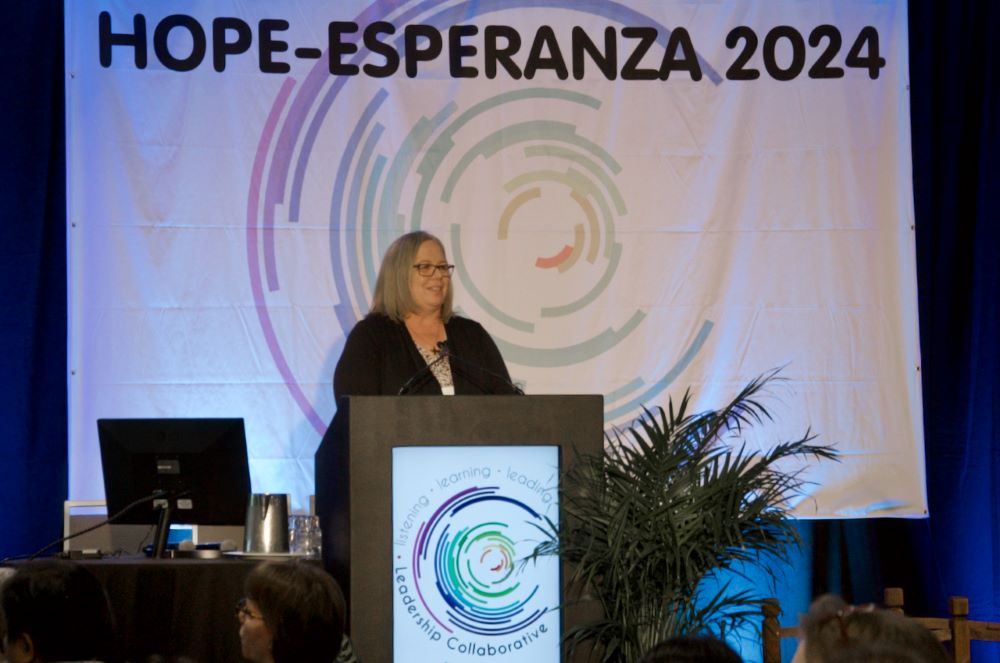
Sr. Linda Buck, executive director of the Leadership Collaborative and a Sister of St. Joseph of Orange, speaks to the Hope-Esperanza Conference Jan. 25 in Chicago. The conference allowed sisters under 65 to meet with others experiencing similar challenges in religious life. (GSR photo/Dan Stockman)
From my perspective, religious life is flourishing! There is no doubt it looks different from years past. That's OK. The Spirit is doing something new … something different. We are in a moment where we cannot grasp what religious life will become. That's OK. We simply and faithfully discern the smallest next steps and respond as they unfold.
I think the most important aspect of these "smallest next steps" is the concrete reality of the global sisterhood. I have the privilege of being involved in two things that energize this idea. The first is a program called Live Out Loud (LOL), a virtual program for religious in initial formation. Now in its fifth year, it allows men and women religious in their earliest stages of initial formation to meet others throughout the world. From their earliest days of formation, this newest group of religious is creating a network of relationships that transcends the boundaries of geography.
The Spirit is doing something new … something different.
The other is the Leadership Collaborative, which fosters transformational leadership and networking. About 150 women religious under the age of 65 gathered in person Jan. 25-28, with more than 100 others joined virtually for HOPE 2024. It is planning a second gathering, HOPE 2025, for any sister under age 65 and creates space for conversations to explore the present and future realities of religious life. Both programs capture the energy of the global sisterhood, spanning countries and cultures, and allowing relationships to develop and strengthen as the new realities emerge.
Religious life seems to be shifting in structure and mindset. All generations of women religious have been faithful and discerning about their lives, seeking to respond to God's invitations. I believe this faithfulness continues for the newer generation of women religious. What is different is the deconstruction of the institution itself. Facing the future, I have no doubt I will continue to have a strong network of fellow sojourners, addressing the signs of the times and fostering Gospel values in all we do. What will allow for the rejuvenation of religious life is nothing new: It is simply the continuation of God's action in this way of life, created as we respond to each next step and discern together. What is new is that much of this renewal is taking place outside the bounds of a single congregation or even a solo charism family. For myself, this dynamic is the sign of renewal taking place.

Mary Karuna Matthew is a native of India and is affiliated with the Congregation of the Sisters of Notre Dame of Coesfeld, Germany. Her areas of specialization include education, theology, formation and psychology. With a wealth of experience in education and formation, she currently serves as part of the general administration, where she oversees the congregation's formation program. She lives in Rome.
The church has experienced cycles of decline and revival of vocations in religious life. In recent times, the decrease in religious vocations has raised concerns among many religious communities. We are seeing religious congregations and provinces consolidating due to the lack of new members to continue the ministry. However, a decline in vocations does not signify the end of religious life. Instead, it urges religious communities to revisit the essence of their calling, creating an environment for significant spiritual renewal and rejuvenation. In his book New Seeds of Contemplation, Thomas Merton wrote, "Our vocation is not simply to be but to work together with God in the creation of our own life, our own identity, our own destiny … to work out our identity in God." This quest for a deeper understanding of identity in God extends beyond conventional religious practices, encompassing a broader exploration of spirituality and mission.
Sr. Maria Anete Hertha Becker, a 99-year-old member of the Sisters of Notre Dame Passo Fundo Province in Brazil, remains active in her community as an artist and art teacher. (Courtesy of Sisters of Notre Dame)
Despite the decline in vocations, religious life remains rich and fulfilling. There are signs of new spiritual life and rejuvenation in religious life, reflecting a more inclusive understanding of faith and spirituality. I know several religious communities that are small in number, but their essential tasks of being leaven and their charismatic service are commendable, indicating a shift from quantity to quality for a deeper spirituality. Pope Francis reminds us that vocations are about quality, not quantity so that the eventual crisis of "quantity" might not determine the much graver crisis of "quality."
The challenges that religious life faces today give rise to a new kairos, a time of grace. Despite decreasing vocations, many religious communities are responding to the needs of the time with introspection and a return to their original spirit and charism and living it with creative fidelity. This spiritual renewal is evident in new forms of prayer, engagement in social justice issues, environmental stewardship and innovative ministry approaches. The focus has shifted from an inward-looking approach to a proactive, outward-looking perspective.
Let's not just focus on the "fewness," but appreciate the "richness" in each of us who have responded to the call.
This renewal has led to intercultural initiatives, intercongregational networking and collaborations such as the project Solidarity with South Sudan. A new inclusive synodal spirituality is emerging in religious life, replacing the self-centered approach with a more open mindset. By remaining open to innovation, embracing diversity and fostering sustainability, religious have begun to adapt to meet the spiritual needs of the people. We want to honor our roots and live our charisms while embracing diversity. Let's not just focus on the "fewness," but appreciate the "richness" in each of us who have responded to the call of the Master for a deeper, more resilient and meaningful religious life.
Advertisement
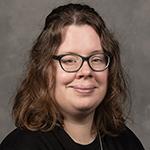
Kathleen Noelle Cummings is currently a novice at Monastery Immaculate Conception, a Benedictine monastery in Ferdinand, Indiana. Before entering the community, she worked in communications at the University of Wisconsin, in marketing for an academic publishing house and taught music. She enjoys reading, writing and discovering how God is present in the moments of everyday life.
Before I write about renewal and growth in religious life, I want to write about fear and its reasonableness. Religious communities fear irrelevancy and organizational extinction. Sometimes, I push those fears away. Other times, I let them unwind and tangle around my heart.
Sr. Kathleen Noelle Cummings received an encouraging note from one of her sisters. (Courtesy of Kathleen Noelle Cummings)
In the U.S., many people are unaffiliated with organized religion, and that number increases every year. We all know many people who believe religion is at best an odd, outdated custom, and at worst, a tool of harm, oppression and colonialism. To propose an alternate belief — that religion can guide us on a beautiful path of love for God and others— often seems impossible.
However, irrelevancy and low numbers aren't the whole story. Younger members of religious communities want to work together, across religious orders and sometimes even denominations. Religious women share the same mission — which pushes us across the divides of conservative vs. liberal, habited vs. secular clothes and young vs. old.
When younger members of multiple religious orders gather to dream about the future, it lights a fire and creates possibilities.
Signs of new spiritual life and rejuvenation include older members mentoring and supporting younger members to become leaders and preachers. When sisters embrace opportunities to learn about and engage other cultures, especially our Hispanic population, it brings new energy to a community. I'm encouraged when I see different spiritual practices in a community, such as Taize, the rosary, centering prayer and adoration of the Blessed Sacrament.
When younger members of multiple religious orders gather to dream about the future, it lights a fire and creates possibilities. I've experienced this myself through being involved in the group Giving Voice.
Another way to stoke renewal is to encourage increased cooperation between sisters and male religious, diocesan priests and deacons. Imagine the possibilities if every parish had a sister, in addition to a priest! Women and girls would see themselves reflected in church administration and a ministerial presence. I hope more and more diocesan parish and religious community connections will become possible.
Finally, religious could renew religious life by intentionally engaging with people outside our communities and ministries. It's easy to get stuck in a routine where we talk with the same friends, visit the same places and stay within a comfortable social bubble. We must follow the call of Jesus (and the reminders of Pope Francis) to reach out to people on the margins and those different from us. This will result in real relationships that keep our feet on the ground and our hearts close to what people need from us.
I find hope in the story of Jesus sleeping in the boat while the disciples fear drowning. When they wake him, he quiets the sea and storms (Matthew 8:23-27). Everyone who's lived even a few years knows that the storms aren't always quieted. But in the midst of them, we are not alone. We can't control the future of religious life, but we can control our actions today to shape the future. Let's not give up. May God continually shake us up and out of our routines and indifference and give us the courage to seek renewal and new life.
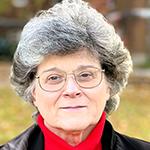
Lucy Zientek is a Sister of Divine Providence, Melbourne, Kentucky, and currently serves on the leadership team of her congregation's U.S. province. She has 14 years' experience as a research and development scientist prior to entering religious life. She has served on parish pastoral teams in the areas of adult faith formation, Christian initiation and pastoral ministry. She also presents retreats and days of reflection. Supported by an educational background and career and ministry experience in science, theology and spirituality, her special area of interest is the relationship between science and faith.
There is an unmistakable sign of new life within religious communities today — and it is everywhere! We just need to know how to look for it.
Signs of new life, of course, are not always obvious. One of the most stunning examples of that is as close to us as the air we breathe. Space — our common, everyday-kind-of space — is actually frothing with new life! We think of it as a kind of container for the stuff of the universe, but physicists know better. Space is actually pervaded by a mysterious something called the "quantum field," which is constantly birthing new particles that are the very building blocks of matter. Where do they come from? Where do they go? Is this all just another curious cosmic mystery that has captured the attention of scientific sleuths? Or another reflection of the God who is ever making all things new in this universe — even its tiniest particles? Or both?
"Joy," Jesuit Fr. Pierre Teilhard de Chardin once said, "is the most infallible sign of the presence of God," and when God is present, we can be sure that the world is being recreated. The unmistakable indication of new spiritual life is joy, stretching through every fiber of life in religious communities today, just like the quantum field sprawling invisibly across every inch of spacetime. How very much religious life is like Mary, who welcomed the surprising yet unknown future by proclaiming her joy with the Magnificat in the presence of Elizabeth.
A statue of Mary is displayed at Immaculate Conception Catholic Church in Cottonwood, Ariz., Oct. 29. (OSV News/Bob Roller)
Congregations of religious women have been grasping practically every opportunity to "let go and let God" rather than resist change. Proactive in "right-sizing" their properties, they strive to find ways to ensure that their resources will be used in service to God's people and in the spirit of their community's mission. Their members continue to share a clear sense of purpose and overwhelming gratitude for the blessings and the privilege of lives lived in service of the Gospel. These are but a few of the many concrete forms that joy takes in religious communities today, all of them signs of the new life that is already on the way.
Life and ministry go on as usual. Some days exhaust and sadden, while others energize and delight, but the signs of new life are everywhere today, and not only in religious life. Appearing at times to be so ordinary that we find ourselves questioning if they are really signs at all, they can easily be missed. But it depends on how we look at things: if God really is always re-creating the world, then something good — something very good — is always happening just below its surface, just beyond our field of vision and even the farthest horizons of our dreams. And because God is present, religious life and the world itself, just like that common, everyday-kind-of-space, are inherently creative, birthing the new. We just need to know how to look for the joy, and embrace the new life it heralds with our own Magnificat!






